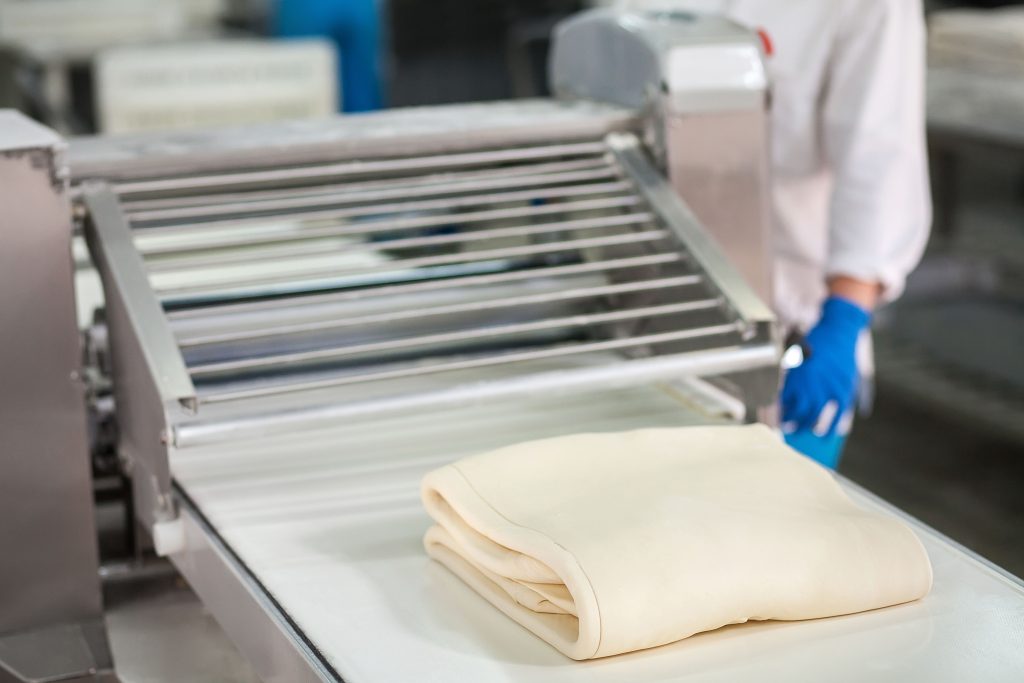
People overcomplicate things. That’s just how it goes. I’ve been around commercial kitchens long enough to know that when folks ask me how to clean a dough sheeter, they usually expect some complicated, multi-step drama. Truth is — it’s pretty simple if you know what you’re doing.
The trick is consistency. The real enemies? Neglect and laziness. Dough bits, flour dust, sticky patches — ignore them long enough, and your trusty machine turns into a sticky, rusty nightmare.
Forget shortcuts. Let’s do this right.
Safety First — Always
Before you even think about touching anything sharp or electrical, stop for a second. Turn the machine off. Pull the plug. No exceptions.
I’ve seen people skip this, and believe me — one slip, and you’ll remember it the hard way. Safety precautions when cleaning bakery machines aren’t something to play around with. You’re working with machinery designed to flatten things — don’t let it flatten you.
What I always do before getting started:
- Unplug the machine — physically, not just “off.”
- Remove any loose stuff — rings, bracelets, ties.
- Pull on gloves if you’re using chemicals or hot water.
This is the stuff that saves fingers, time, and sanity.
Dough Sheeter Cleaning Procedure That Actually Works
If you’re curious how to clean dough sheeter parts properly, let me break it down. I’ve done this more times than I can count, and it’s never failed me.
The golden rule: clean it after every single use. Dough dries fast. And dry dough is basically glue.
Here’s what I do every time:
- Strip off all the parts that come off — rollers, scrapers, trays.
- Use a dry brush or cloth to swipe off the flour and crumbs. Don’t skip this — those tiny particles matter.
- Wipe it down with food-safe sanitizing solutions for kitchen equipment. I’m picky about this because I like to keep your kitchen naturally chemical-free whenever I can. No harsh stuff. Gentle but effective.
If something sticky won’t budge, a damp cloth with mild soap works. But dry it fast — moisture is trouble. Moisture invites rust. Rust ruins machines.
Keep It Running Smooth — Maintenance Tips for Dough Sheeter
I’ve lost count of the number of times someone’s called me, panicked, because their dough sheeter’s jammed or groaning. Nine times out of ten, it’s just poor upkeep.
Here’s what I always tell people:
- Oil the moving parts once a month. Use food-grade lubricant only.
- Tighten any loose screws — check them when you clean.
- Take a peek at the belts and gears regularly. Small issues turn into big repairs if you ignore them.
These simple maintenance tips for dough sheeter care don’t take much time, but they’ll save you from downtime and expensive fixes.
Clean It Like You Mean It — Commercial Kitchen Equipment Cleaning
Let’s be real — commercial kitchen equipment cleaning often gets rushed. People get busy, shifts run long, and suddenly machines go weeks without a proper clean.
That’s not how I roll.
I treat every tool like it matters — because it does. Keeping cleaning and washing equipment in top shape is part of the rhythm of a kitchen that actually works.
Here’s the bare minimum I tell folks:
- Clean every single time you use it. No “later” excuses.
- Use sanitizers designed for kitchens — no bathroom bleach nonsense.
- Keep cleaning clothes for machines separate from general mess rags. Cross-contamination is real.
This isn’t just about hygiene. It’s about respect for the tools that make the work possible.
My Take: Keep It Simple, Keep It Honest
If you’ve made it this far, you already know the answer to how to clean a dough machine: don’t cut corners. Don’t let flour and dough build up. Clean it, dry it, oil it. Simple.
And honestly? There’s something satisfying about it. When you take care of your tools, they take care of you. It’s how you keep your kitchen naturally efficient, safe, and running without drama.
I don’t overthink it. I just do it. Every time.